Alexandrine Parakeet Amazing Priced Mutations: Breeding
Alexandrine Parakeet Amazing Priced Mutations: Breeding
Here is the YouTube video version of this article:
Don’t forget to like, share, and subscribe on YouTube for more in-depth bird content!

Green Wild Type Alexandrine Parakeet
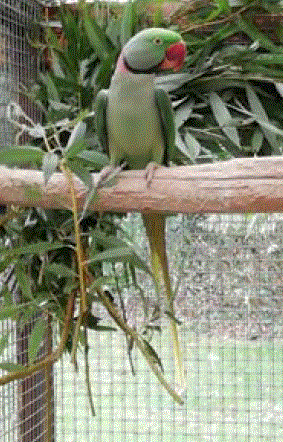
Although it is not a mutation, but the wild color, this bird deserves to be named. This is because it can be seen more often in aviaries, partly because of the less expensive price. This of course makes him no less beautiful. The color is uniformly green, the feathers of the middle tail are blue and the collar for the male who appears after 2 years is black/pink. They also have deep red wing patches. The green alexander parakeet is naturally present in Bangladesh, Bhutan, Cambodia, India, Laos, Myanmar, Nepal, Pakistan, Sri Lanka, Thailand, and Vietnam. The bird was first imported ever by Alexander the Great.
Lutino and Lutino recessive grey-green Alexandrine Parakeet

This beautiful bird is very popular with Alexander Parakeet breeders, partly because of its attractive color and relatively affordable price. The bird was first imported from India to Europe in the 1930s. He inherits sex-linked, which means that only males can be split. The color is bright yellow, the eyes are red and the wing patches are dark red and the collar that appears after 2 years with males is red with white on the front. This contrasts with the recessive grey-green lutino, which has a red collar, but white is replaced by grey-brown. Apart from this characteristic, the difference between the two is not clearly visible. Some grey-green recessive lutinos have a brown haze over the body.
Blue Alexandrine Parakeet
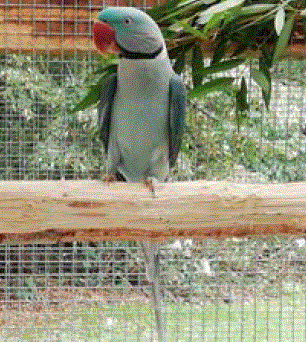
This mutation was also introduced in Europe around 1930. This is a very important mutation because many other mutations can be created by combining with blue. The color is uniformly blue, with dark eyes and the wing patches are grey. Males have a black/white collar around the neck at 2 years. This mutation inherits recessively so that males and females can be split.
Albino and albino recessive grey

This mutation is achieved through the combination of blue and lutino. It produces a very special bird without wing patches and red eyes. Albino grey recessive males get a dark grey collar around the age of 2 years, while the normal albino male does not get a collar that naturally does not make him less attractive. The recessive grey albino is sometimes called misty and can also be recognized by the brown haze over the body. This bird is interesting for producing recessive grey which I will talk about later.
Recessive grey-green
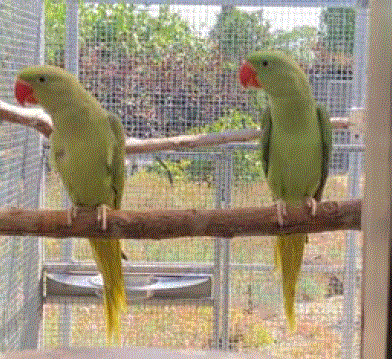
This bird is soft olive but not as dark as dominant grey. This bird was relatively rare until recently but is now bred more often. The color can vary from lighter green to mustard green. The wing patches are deep red and the male gets a black/red collar. As the name implies, this bird inherits recessively like the blue we spoke about earlier.
Recessive grey
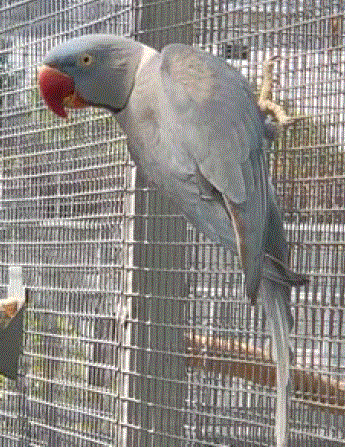
This bird is relatively rare but is more and more found among the experienced breeders of the Alexander Parakeet. This mutation, like the recessive grey-green, is not found in Ringneck parakeets, which immediately undermines the theory that all alexander parakeets were created by crossbreeding with Ringneck parakeets. The color is between blue and grey, the wing patches are grey and the males have a black/white collar. This bird also inherits recessively.
Dominant grey-green
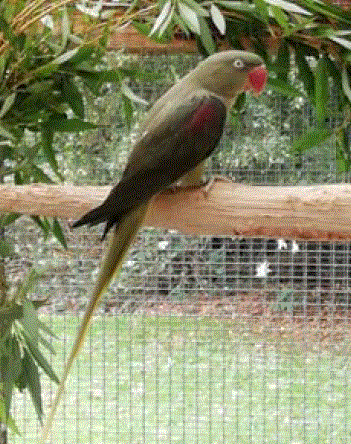
This bird is in my opinion a jewel to see. However, it must be said that there are many hybrids in circulation. In India and Pakistan, wild caught birds were exported to Dubai and found their way to Europe. I am the proud owner of a purely dominant gray-green split-blue female.
The color varies between brown and dark green, the wing patches are red and the collar of the males is black/pink. As the name suggests, this bird inherits dominant, making it easy to breed.
Dominant grey
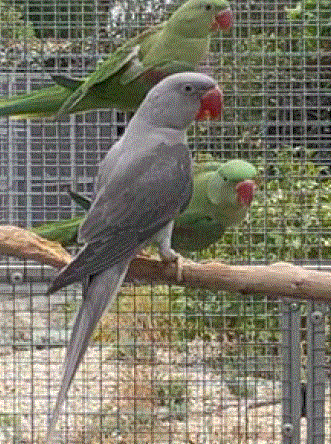
In my opinion, this bird is also an eye-catching bird to see, especially the adult males. We obtain this by combining dominant grey-green with blue. The adult males are beautiful to see with their black/white neck ring. What also makes this bird special is that it has no wing patches. In the photo, you can see a young dominant grey bird.
Aqua
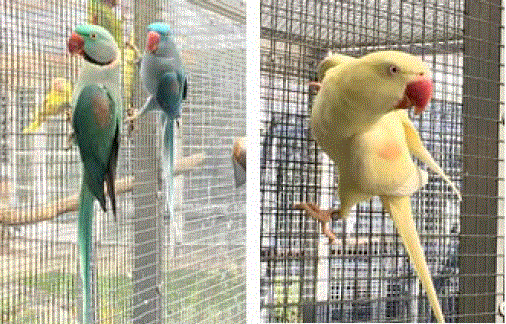
The aqua or also called emerald is a beautiful green-blue bird from Europe. The bird inherits recessively, although some breeders claim that it inherits dominantly over blue. This would be wrong. In terms of inheritance and appearance, the bird can be compared to turquoise, with the difference that the aqua has a more even color throughout the body.
The wing spots are pink-brown and the neck ring of the males is black/pink. This bird is gaining popularity and in combination with the albino, it results in a beautiful cream-colored bird. The aqua ino has orange spots on the shoulders and the males get an orange neck ring. This bird can also be combined with recessive grey and dominant grey, but these are still very rare.
Dark green

This bird is still very rare, but very important for the cultivation of cobalt. The bird is dark green with red patches on the shoulders and 2 cobalt-colored tail feathers. Males have a black/pink band. Dark green and cobalt are already present in England, as well as in Dubai and other Eastern countries. Cobalt is deep dark blue with light grey patches on the wings and males have a black/white band.
Conclusion
Raising the Alexander Parakeets requires a lot of patience, money, effort, and kilometers to purchase the ideal bird, and also a lot of frustration. It is not like breeding Ringneck parakeets that breed after 2 years and that need not be much worried because these birds are easier. So know where you start, but the effort will certainly pay off if you find beautiful mutations in the nest box.
Many thanks to Sjack Bastiaan and Barry Kyme. – By Wouter Dierckx
All birds are susceptible to diseases. More information.
If you found this post, Alexandrine parakeet mutations, helpful, you might also be interested in:
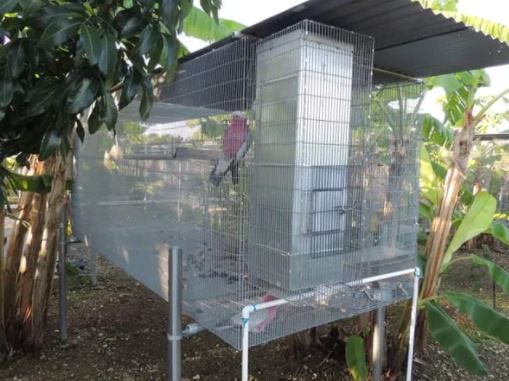


Good Work
Thank you, appreciated.
Dear
It is requested please tell me the lutino alexander female and lutino alexander split male what is the chick result .
How many lutino alexander and split ratio ?
Hi Nasir
Thank you for your comment. Unfortunately I don’t know but I will ask the author, Wouter Dierckx, and if he respond, send you an email directly. Have a great day.